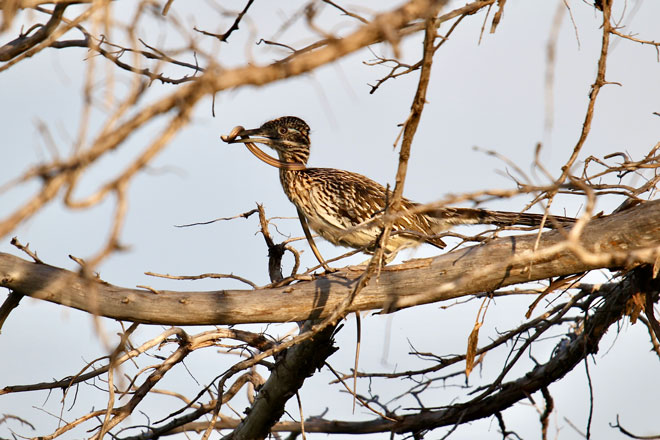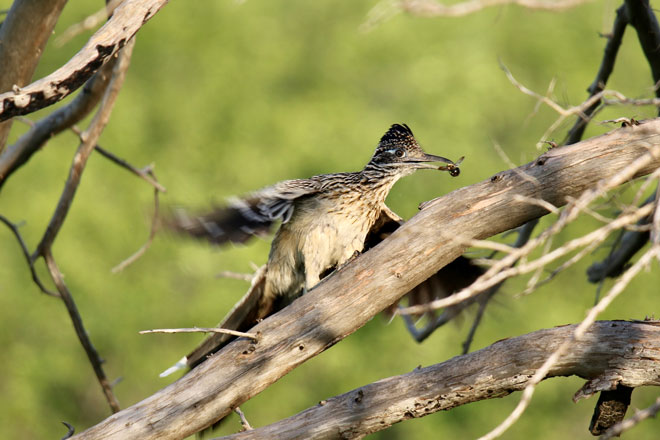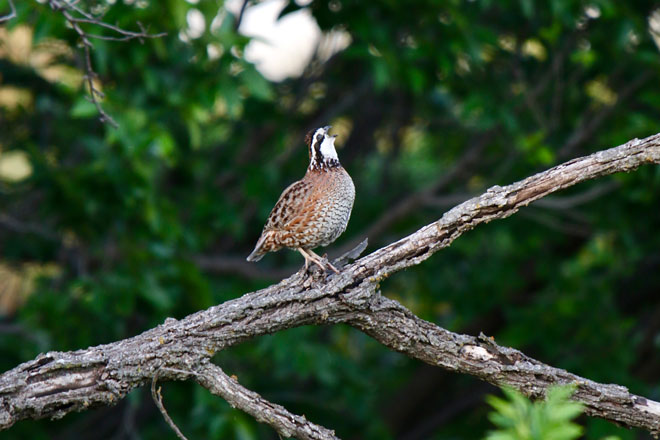Witnessing life, death, and biodiversity in quail country
By Chad Love
If you were to ask me to name the coolest and most unusual animals that live in my part of quail country, the greater roadrunner and the western slender glass lizard would surely be included on that list.
And recently, while walking the prairie looking and listening for bobwhite quail, I was lucky enough to see both cool creatures in a life-and-death interaction I’ve never witnessed before, all while a male bobwhite whistled just a few yards away.
Most anyone who reads me knows that I am almost as enamored of reptiles and amphibians as I am of birds. If you go hunting with me in the early season when it’s still warm, you will be subjected to me stopping to catch, admire, and then release every snake, turtle, lizard, toad, and frog that we happen to see. It’s just a requirement of hanging out with me.
And I think every quail hunter should be — at a bare minimum — a herpetology appreciator, if not an enthusiast. Why? Because lots of reptiles and amphibians in an area mean there’s also a healthy insect base to support those reptiles and amphibians. And a healthy insect base also means plenty of weedy forbs and pollinator plants to support those insects. And plenty of insects plus plenty of weedy forbs and pollinator plants usually equals plenty of quail.
But that’s fodder for another column. Back to the scene at hand...
I parked the truck and began walking down a lease road on a piece of private ground I have permission to explore, when I happened to see a roadrunner up ahead of me, running in the same direction, keeping pace about 50 yards in front of me.
Now anyone who lives in roadrunner country has a few stories about these supremely interesting, intelligent, and cool predatory birds. I once had one that would stand outside the window in our dining room where I often work during the day, and watch me intently.
I never figured out whether he was simply curious, as intelligent birds tend to be, or if he simply wished he was large enough to eat me. Either way, I always enjoyed his company.
Like I said, everyone in roadrunner country has a roadrunner story. Unfortunately, if you are a quail hunter, some of those stories you’ve heard may be anecdotal tales of roadrunner predations on quail chicks.
And while it’s certainly possible that a roadrunner will occasionally take a quail chick if the opportunity presents itself, almost all the actual science and scientific observation on the subject says the roadrunner is not a consistent predatory threat to quail.
But if you’re a lizard? Well, then a roadrunner is winged death, indeed.
.jpg.aspx)
Which brings up the western slender glass lizard. Out of all the widely varied lizards that live across quail country, none are as unique, or as uniquely beautiful in my opinion, as the glass lizard. Most people who see it mistake it for a snake, because the glass lizard has no legs and indeed superficially resembles and moves like a snake.
The “glass” part of its name derives from its tendency to easily snap off its tail (even more so than other lizards) as an escape mechanism, a trait to which a young version of myself could easily attest. As a child I was probably responsible for more unintentional glass lizard tail amputations than anyone in central Oklahoma. I just never could get the hang of grabbing a whole one without ending up with only a third of one.
Where I live now in far northwest Oklahoma is near the western edge of the glass lizard’s range, and as a result I don’t see them as often as I used to, but when I do it’s a treat.
But glass lizards weren’t on my mind while following that roadrunner. I was simply hoping to get a decent photograph. Roadrunners being roadrunners (there’s a kernel of truth in that Loony Tunes character) he refused to stop and let me take a pic, and I thought I’d missed my opportunity when he suddenly darted to the side of the road, lunged at something and then just as quickly hopped onto a fencepost and commenced to — in the parlance of my youth – absolutely whalin’ on what looked like a snake in his bill.

The snake (at this point I assumed it was a snake) writhed and thrashed for a second or two, and then went limp in the roadrunner’s bill. I managed a quick pic before he flew into a nearby dead cedar, and down the hatch went the snake. No sooner had the tail gone down his throat when the roadrunner cocked his head to the side, lunged, and plucked a passing carpenter bee out of the air like an airborne after-dinner mint.

Still excited about what I had witnessed and hoping I’d gotten a few usable pics, I reviewed a few frames in the camera’s display, and that’s when I began to suspect what he’d eaten was not a snake, but a glass lizard.
About this time, as I’m looking at photographs on the camera, a male bobwhite I hadn’t even noticed, and who was apparently unperturbed by the gruesome scene recently played out before it, began whistling not 20 yards from both the roadrunner and myself.
Startled, I fumbled with my camera and managed to snap a few quick pics before my loud, clumsy human thrashing scared both birds into flight as I tried to position myself to get both birds in frame.

Still, it was a fascinating (well, maybe not for the glass lizard...) encounter involving three of my favorite animals, and it struck me as a particularly good indication of the truly amazing diversity that good quail habitat supports.
Chad Love, a passionate herpetology appreciator, is also editor of Quail Forever Journal.